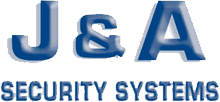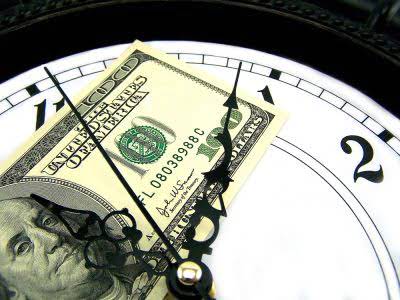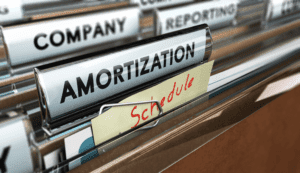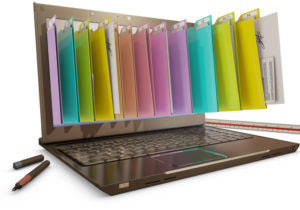For example, a manufacturing company may have a larger focus on plant assets such as production machinery and vehicles, while a retail store may prioritize equipment assets like cash registers and shelving units. It is important for businesses to accurately categorize their assets to ensure proper accounting and reporting. Understanding the definitions and characteristics of plant and equipment is essential for businesses to make informed decisions regarding asset acquisition and management. By properly categorizing and maintaining plant and equipment assets, businesses can ensure operational efficiency and long-term success.
- An increase in the value of the land on which a building stands does not affect the determination of the depreciable amount of the building.
- Similarly, the cost of abnormal amounts of wasted material, labour, or other resources incurred in self‑constructing an asset is not included in the cost of the asset.
- Plant assets and the related accumulated depreciation are reported on a company’s balance sheet in the noncurrent asset section entitled property, plant and equipment.
- By organizing asset management through a hierarchical structure and implementing routine maintenance, companies ensure critical assets receive necessary attention.
- When the cost model is used, the fair value of property, plant and equipment when this is materially different from the carrying amount.
- When substantial improvements or upgrades are made to a plant asset, they are capitalized as part of the asset’s value rather than expensed immediately.
- Below is a break down of subject weightings in the FMVA® financial analyst program.
b. Complex manufacturing equipment
If the building is purchased, the amount debited to the asset account includes the cost of the building, legal fees, survey costs, title insurance costs, and most costs paid at closing. Most repairs done to the building will be either charged to expense (for the usual, ordinary items) or set up as a separate asset account (such as a roof replacement or the purchase of a new boiler). Three common traits of these fixed assets are that they are used in the operation of the business, they last more than one year, and they usually are fairly expensive. All the amounts necessary to get the asset ready for use are included as part of the cost. These amounts commonly include the cost of the item, sales tax, and delivery and installation costs. Machinery and equipment include any machines, tools, and devices used in production, manufacturing, or service delivery.
- This approach allows businesses to reflect the decreasing value of the asset accurately on financial statements.
- The name plant assets comes from the industrial revolution era where factories and plants were one of the most common businesses.
- If the cost of land includes the costs of site dismantlement, removal and restoration, that portion of the land asset is depreciated over the period of benefits obtained by incurring those costs.
- Equipment location numbers should be reflected in the General Ledger so that entering the equipment location number on work orders and other transactions will ensure that the correct accounts are charged at all levels.
- These can include fencing, grading (changing the slope of the land), paving, and lighting.
Automate and error-proof your asset tracking processes.
This is especially important later because the depreciation recorded on the buildings affects reported income, while no depreciation is taken on the land. The cost of net of property plant and equipment shall be recognized as an asset only if it is probable that future economic benefits will flow to the entity, and its cost can be reliably measured. The plant is the machinery or equipment and vehicle that the company uses in the manufacturing process. Many types of machines may be used in the business, such as manufacturing equipment, transport vehicles, assembly lines, the entire computer system connecting all the processes of the organization, etc. The equipment are also referred to as any other assets that are used in the daily operation but do not fall under the category of building or property or machinery used in the production process. They include office furniture, Financial Forecasting For Startups stationary, tools, and fixtures, that support daily business activity.
- For example, it is normal for companies to repair or replace old factories or automobiles with new assets when necessary.
- Left by themselves, PP&E just sit there, but put into action by people with energy and purpose, they become a money-making machine.
- Property, Plant, and Equipment (PP&E) represent the tangible assets utilized by businesses in their daily operations.
- These differences impact how each asset type is managed, valued, and reported in financial statements.
- Since plant assets have a finite useful life, they experience gradual wear and tear, which decreases their value over time—a process known as depreciation.
What’s the right valuation method for plant and machinery?
- Non-current assets are reported separately under the “Fixed Assets” or “Property, Plant, and Equipment” section.
- Any asset may be included in the plant assets classification, as long as it contributes to the generation of sales.
- The exception is land, which typically does not depreciate because it doesn’t wear out or become obsolete over time.
- However, it they are disposed of in any method other than sale, like exchange or abandonment, then they will be continued to be treated as an asset till it is totally disposed of.
While we strive to ensure accuracy and timeliness, information may change and may not apply to your specific circumstances. Maxwell Locke & Ritter LLP is not responsible for any actions taken or not taken based on the content of this article, nor for any loss or damages that may result. We encourage you to consult with a qualified professional regarding your individual situation. The revaluation surplus, indicating the change for the period and any restrictions on the distribution of the balance to shareholders. Expected physical wear and tear, which depends on operational factors such as the number of shifts for which the asset is to be used and the repair and maintenance programme, and the care and maintenance of the asset while idle. Usage is assessed by reference to the asset’s expected capacity or physical output.
Property, Plant and Equipment
Regular reassessment ensures that financial statements reflect the true value of assets. Buildings are structures where a business conducts its activities, such as manufacturing plants, corporate offices, retail stores, and warehouses. These assets are typically significant investments and have long useful lives, but they do depreciate over time due to natural wear and tear. Companies may periodically invest in repairs or renovations to keep buildings safe, efficient, and compliant with regulations.
The cost of capturing this type of information and, contra asset account if required, re-numbering equipment locations and materials catalogue items should be considered when installing maintenance software. In any facility requiring maintenance, all assets from the plant level down to the smallest item of equipment should have one and only one identification number which is the basis for recording all important operating and cost information. The identification numbers for assets which are “stand alone”, such as manufacturing machinery, should be unique while identification numbers for infrastructure may be generic, as explained below.
A plant asset is an asset with a useful life of more than one year that is used in producing revenues in a business’s operations. The carrying amount of PP&E shall be derecognized on disposal; or when no future economic benefits are expected from its use or disposal. In such cases the asset is removed from the financial statement through some procedures. Derecognition may take place due to sale, exchanging it with any other similar but is equipment a plant asset useful asset of simple abandonment.






